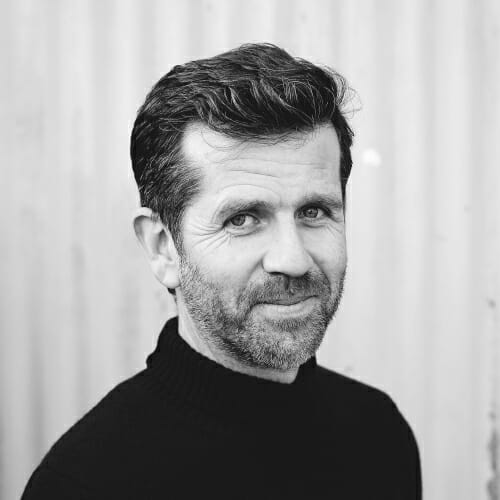Entrepreneur Case Studies
A Journey into Personalized Luxury Fashion: Editorialist YX CEO Rafael Ortiz (Part 1)

As you know, I have a passion for personalized luxury fashion and ventured into that market early on in 1999 when the market wasn’t quite ready for it yet. Rafael is building a wonderful luxury fashion venture with unique personalization details.
Sramana Mitra: Let’s start at the very beginning of your journey. Where are you from? Where were you born, raised, and in what kind of background?
>>>Building a Global Hardcore Financial Technology Company from Brazil: Ricardo Josua, CEO of Pismo (Part 6)
Sramana Mitra: What is your engineering team in Brazil like? How big is it? Is it all in one place?
Ricardo Josua: It’s spread around the world. We have 280 engineers at this point.
Sramana Mitra: In Sao Paulo?
Ricardo Josua: No, they’re remote. Maybe 120 are in Sao Paulo. We have become remote-first. People have an office if they want to go to an office. If the team wants to have a meeting and three of them are in India, everyone has to connect on their own device. It has to be the same experience for everyone. We have now engineers in India and Singapore. We have a growing team of engineers in the US and UK.
>>>From Developer to Serial Entrepreneur: Michael Morris, CEO of Torc (Part 6)
Sramana Mitra: I have a slightly different kind of question. You are a developer who turned into a successful entrepreneur. You have a real insight into how a developer becomes an entrepreneur. Torc is working on the basis of equipping developers to be freelancers and blossom their careers. Given what’s going on in the world today, there is this tremendous desire for developers to be entrepreneurs. Is that something that you’re thinking about? Is that something that you want to facilitate?
Michael Morris: In our original business plan, we wanted to have a track in Torc that allows that path of going from a developer to an entrepreneur. I also want to be realistic. I think that for 9 out of 10 developers that want to go down that path, it’s not a great idea. Maybe they’re part of an entrepreneurial team. Everybody wants to be a CEO or a visionary.
>>>Building a Global Hardcore Financial Technology Company from Brazil: Ricardo Josua, CEO of Pismo (Part 5)
Sramana Mitra: Your core value proposition when it comes to the global market is the combination of payments and core banking?
Ricardo Josua: This is one of the main features. You have everything rolled up in a single integration. The second one was that this is not a monolithic solution. It can provide all the systems, but you can build around them. One of the pains that we try to solve was that we don’t want to be the bottleneck in the development of products from our clients. We have to make sure that we have out-of-the-box solutions if you want a basic product.
>>>From Developer to Serial Entrepreneur: Michael Morris, CEO of Torc (Part 5)
Sramana Mitra: How big is the developer community now?
Michael Morris: It’s about 2,600 people. We’re still getting off the ground. Out of that, about 500 are vetted. These are people who have gone through our assessment process, built their profiles, linked up their GitHub accounts, and installed and started using our productivity tool.
Sramana Mitra: You have enterprise customers already?
>>>Building a Global Hardcore Financial Technology Company from Brazil: Ricardo Josua, CEO of Pismo (Part 4)
Sramana Mitra: Were these Brazilian banks?
Ricardo Josua: The first ones, yes. The first one we went to was the largest bank in Brazil. We ended up closing this large contract. It was an experiment. Just having the open door there changed everything.
Sramana Mitra: Now you can go to all the other Brazilian banks and say that you’re working with the largest bank.
>>>From Developer to Serial Entrepreneur: Michael Morris, CEO of Torc (Part 4)
Sramana Mitra: Tell me what is the beginning of Torc. How much funding did Frank put in?
Michael Morris: That was an important piece for me. Through my experiences at Appirio and Topcoder, I knew about the effort it takes to fundraise. I was concerned about it. I didn’t want to spend all my time constantly fundraising. I just wanted to build something and focus on that. The fact that they were private equity was a little bit of a different structure. I don’t see myself going to somebody else. We had a commitment for a large level of funding, but we’ve only taken $5 million.
>>>Building a Global Hardcore Financial Technology Company from Brazil: Ricardo Josua, CEO of Pismo (Part 3)
Sramana Mitra: Pinpoint for me exactly what problem you are solving now.
Ricardo Josua: We are solving agility with robustness for core banking capabilities. What banks have done for the past 10 years is take an agile team or a group of young developers and build experiences that are very cool but have to integrate with old legacy infrastructure. In 99% of the cases, that’s a major bottleneck. What we were providing is the backbone to match the chops of their customer experience needs. We have agile, microservices-oriented solutions for banking infrastructure.
>>>